The intelligent development of automobiles has been increasingly concentrated on the new forces of electric vehicles, with even pure electric micro-cars under 100,000 yuan being equipped with intelligent cockpits and L2 level assisted driving capabilities. It seems that electric cars are synonymous with intelligence.
If license plates are not green, it seems like there is a “generation gap”. People tend to associate old and traditional with fuel cars. However, the fact is that fuel cars can also be intelligent, it’s just that the prices of optional advanced driving assistance systems cost tens of thousands of yuan and car prices are often tens of thousands more. Even at the 150,000-200,000 yuan level of joint venture brands, talking about intelligence seems like a pipe dream.
Until two days ago, when I was helping a friend choose a car, I accidentally stumbled upon a new choice, the Jiangling-Ford Lingrui, priced at 148,800 yuan and up for pre-sale.
Buy new, not old
Three years ago, I held 200,000 yuan and wanted to buy a well-equipped joint venture SUV. After wandering around, I finally bought a compact SUV with all-round configurations for just under 190,000 yuan.
Today, three years later, holding the same 200,000 yuan and looking at that car, the price has not changed, and even the configurations have hardly changed, only adding a voice assistant without Siri, a car networking system of unknown use, and an ACC without lane keeping. This is not an isolated case. Most joint venture brand products in this price range have this trend. Perhaps it is because it has not entered the replacement cycle, or perhaps because the manufacturers have invested more energy in electrification transformation.
That’s why I didn’t recommend my friend to buy this type of car.
And the reason why I paid attention to the Jiangling-Ford Lingrui is because its intelligent configuration is very rich. Let me briefly list a few configurations:
-
L2 level assisted driving
-
Automatic lane changing (using signal lights)
-
Visual fusion parking
-
50m reversing tracking
When I saw these configurations, like everyone else, I was shocked. Aren’t these configurations only available on new force models priced over 300,000 yuan?
Therefore, after getting the test drive car, I experienced the intelligent functions of the Jiangling-Ford Lingrui for the first time.
Intelligence is the highlight
Assisted driving experience
As usual, let’s start with the hardware. Hardware determines the upper limit of a car’s capabilities, and software determines the lower limit of a car’s capabilities.
The Jiangling-Ford Lingrui is equipped with two monocular vision sensors, one of which has the familiar Mobileye EyeQ4 chip behind it. Other models equipped with the same perception system chip include the Volkswagen ID. series, and NIO ES6, EC6, and other models which this can greatly enhance basic assisted driving capabilities.In addition, the vehicle is equipped with 3 millimeter-wave radars, located at the front and the left and right sides of the rear of the car. The front millimeter-wave radar is mainly used for AEB and adaptive cruise control. The millimeter-wave radars on the rear left and right sides are mainly responsible for detecting rear vehicles, used for blind spot monitoring, door opening warnings, etc.

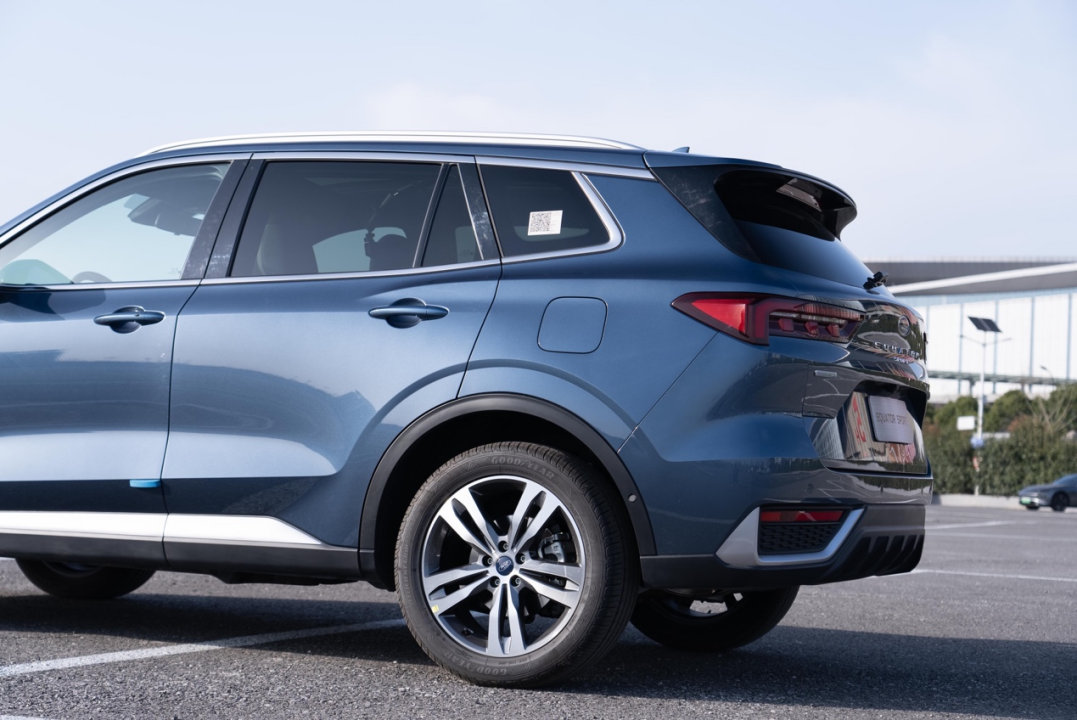
From a hardware perspective, the JMC Ford Tugular has a good foundation for L2 assisted driving, and it is also the cheapest model currently available with a Mobileye EyeQ4 chip, according to our 42Mark test results. Cars equipped with the Mobileye chip have good lane keeping ability.
But the JMC Ford Tugular still needs to be tested for its performance.
The JMC Ford Tugular’s ADAS system needs to be activated in two steps: first, ACC needs to be turned on, and second, lane keeping needs to be turned on. For me, who is used to one-click activation, this process is a bit cumbersome. Fortunately, the activation button is large enough, with a very good feel, and is very easy to operate.
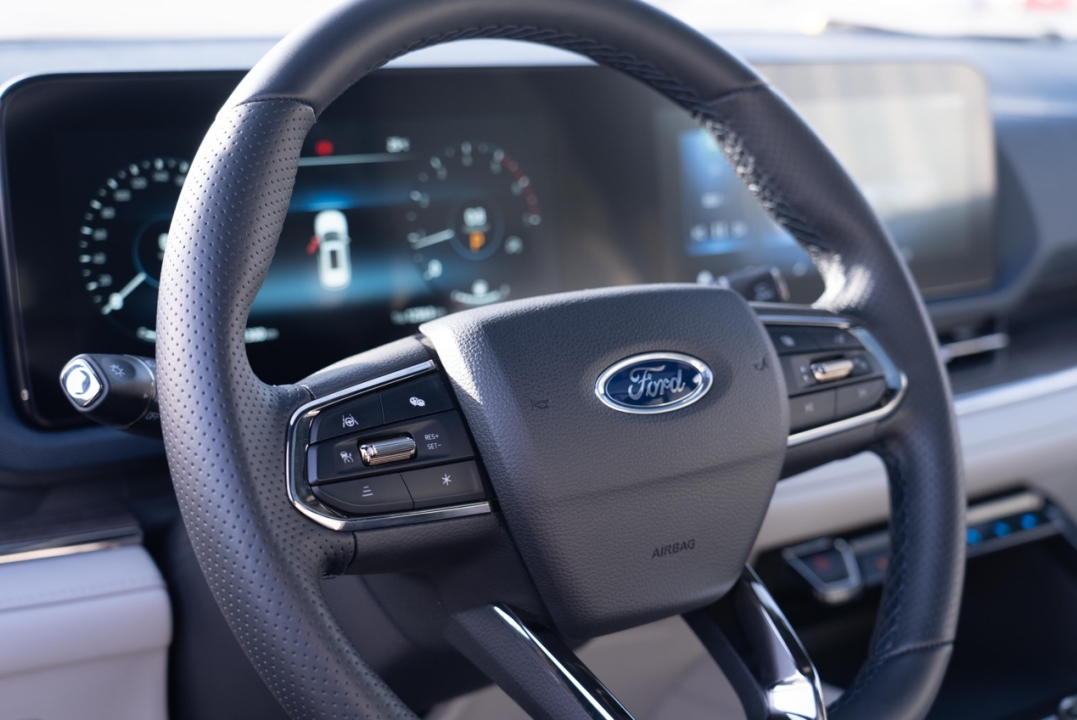
After the ADAS is turned on, I was pleasantly surprised to see that the middle area of the instrument panel changed to the visualized interface of the ADAS. In the previous videos, we repeatedly emphasized the importance of visualized ADAS. Vehicles need to present to the driver what they see and how they think through visualization, so that the driver and the ADAS can work together more effectively. Traditional car manufacturers generally fall short in this regard.
However, this car is an exception. The speedometer has icons for setting the speed limit, following distance, and lane keeping in the lower right corner. The blue lane marking also indicates that lane keeping is turned on.
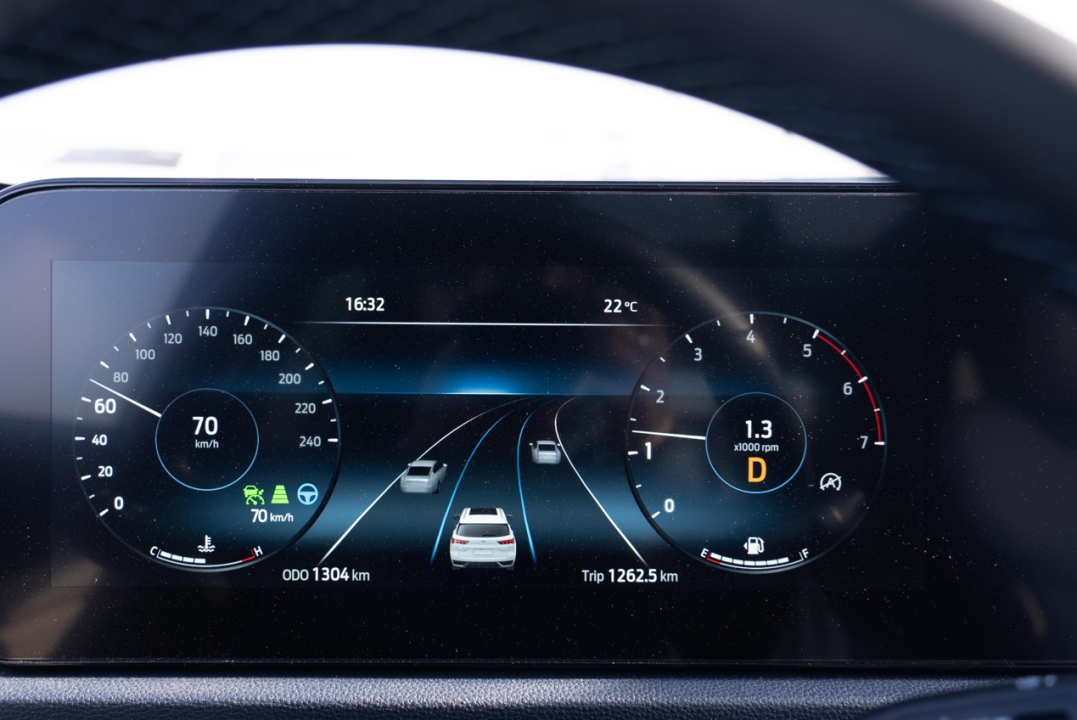
In terms of lane keeping ability, the JMC Ford Tugular can give you great confidence, whether on a high-speed bend or a steep curve on a ramp, it will not hug the left/right or make erratic movements. For Mobileye EyeQ4 and Tugular, this is basic operation, but it is also the core of the ADAS experience.
When driving on the outer ring road at 80 km/h, the lane keeping system can keep the car “pressed” within the lane very stably.
The turning control of the Ford Equator is also natural and it won’t adjust slowly like a machine. In major curved roads, the Equator can steadily pass at a speed of 40 km/h without any problems. If the vehicle can automatically reduce speed as the curvature increases, the performance will be better.
In terms of maintaining distance, Equator will also choose a safe distance according to the different speeds. We can also manually adjust the following distance with 4 levels available.
Under normal following distance, there will be a blue mark in the visualization. When the distance is too close, the car ahead will first be marked in yellow to remind the driver. If the distance is further reduced, the warning will become red to ensure a safe following distance.
When encountering a car cutting in, the reaction speed of the Equator is very fast, and there will be no forceful braking to pull the distance apart. Instead, the front car will first be marked in red in the visualization to inform the driver that the car ahead has been recognized, giving the driver confidence, and then gradually pulling the distance apart to restore a safe following distance.
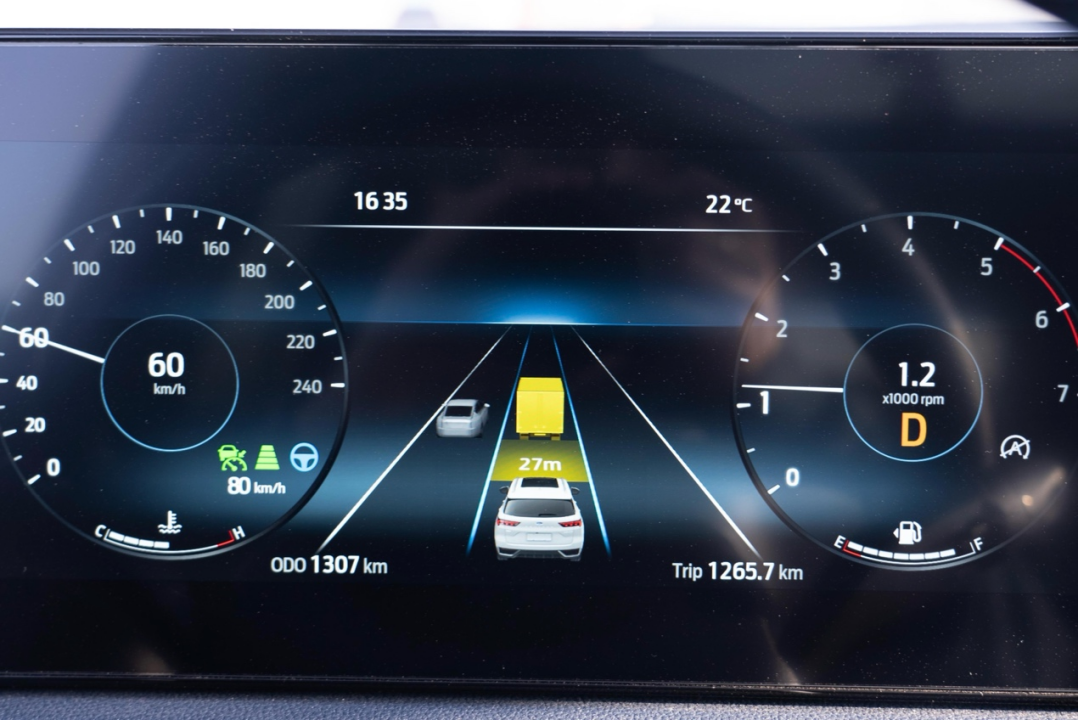
Overall, Ford Equator’s assisted driving abilities have greatly freed drivers’ hands and feet while driving on closed sections such as highways and elevated roads. What surprised me even more is that the Equator also has the function of automatic signaling for lane change, which is hard to imagine in this fuel SUV at this price level.

According to the statement, the automatic signaling for lane change function of the Equator can only be used on high-speed roads and with navigation turned on. After our actual test, the automatic signaling for lane change function indeed needs to be used on high-speed roads, and the minimum vehicle speed must be above 60 km/h, but the on-board navigation does not need to be mandatory turned on.

In actual experience, the lane change function of the Ford Equator is commendable, and the overall stability of the lane change is good. Even when the speed reaches 120 km/h, it can still change lanes to the target lane very steadily.
When judging the safety of lane change, Equator will judge based on the situation of the front and rear cars in the target lane. Generally, when the distance between the front or rear vehicles in the target lane is 30 meters away from the Equator, it can initiate a lane change, which is a relatively long distance even when driving at high speeds.
If the speed of the rear car is too fast, the Lingrui system will determine that it is not suitable for changing lanes at the moment to avoid accidents. The overall lane change strategy is still relatively conservative.
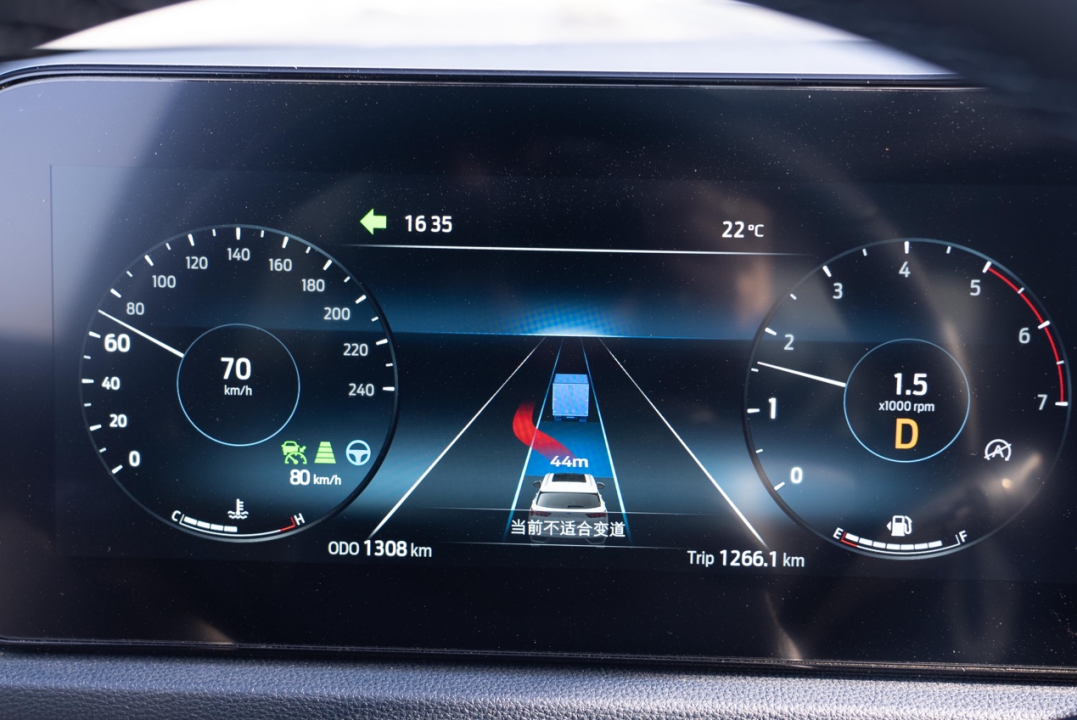
On the highway, we happened to encounter a construction section and cones were placed on the fast lane. We also did a test for the construction section, and as soon as we turned off the left turn signal, the system told us that it was not suitable for changing lanes at the moment. Although it was not displayed visually, it could still recognize obstacles such as cones.
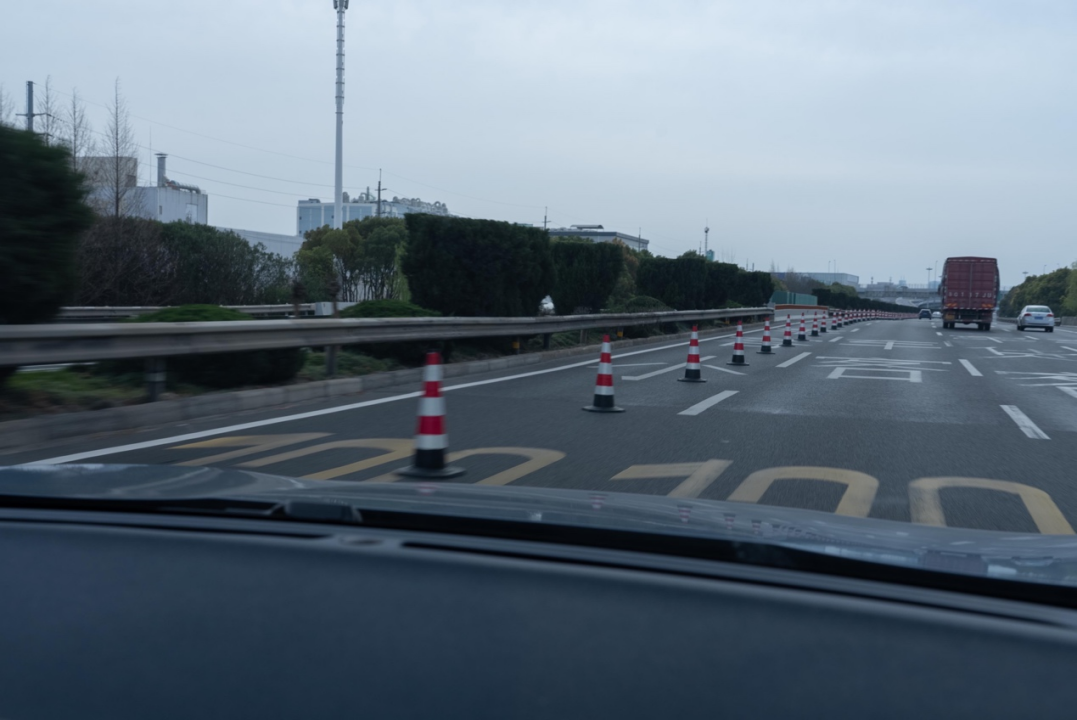
To be honest, at first I didn’t have much confidence in the turn signal lane change function of this car, considering its price, even opponents of the same level could not be compared with it.
Moreover, using millimeter wave+routing in front and relying solely on millimeter wave to “touch” in the side and rear made me uncertain. It wasn’t until I actually experienced it that I realized that this was not a gimmick, but a function that could truly assist the driver in changing lanes.
However, with a more practical road condition, Lingrui’s turn signal lane change plan has certain requirements for the front and rear distance of the target lane. It performs well when the traffic flow is moderate. When the traffic flow on the road becomes larger, Lingrui’s performance tends to be conservative to ensure driving safety.
Parking experience
In addition to the intelligent auxiliary driving, the Jiangling Ford Lingrui also has several highlights in the parking function. Ford officials stated that Lingrui’s APA 5.0 system integrates 12 ultrasonic radar and 4 surround cameras to form a visual fusion parking solution, which is also the mainstream development direction of parking technology.
The way to activate parking is also very simple. There is a parking button on the center console. After turning it on, the vehicle will display the parking methods you want, including parking into position, parking out of position, and tracing reverse.
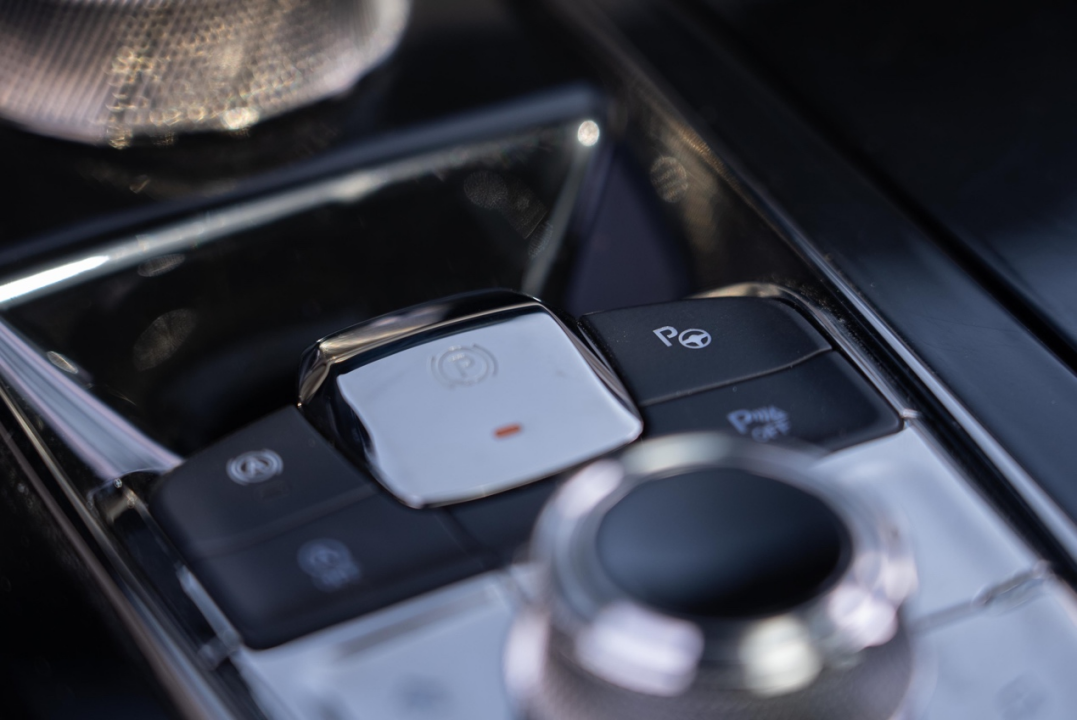
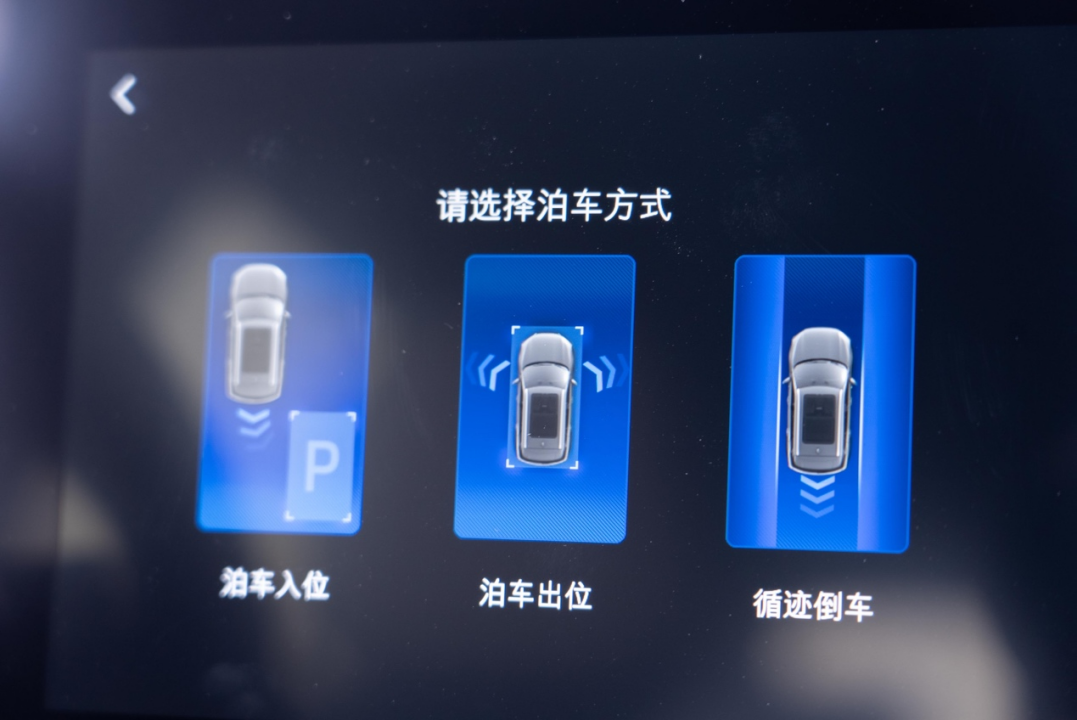
In the parking in position mode, Lingrui can handle vertical parking and parallel parking, and the parking speed is not very slow. Two types of parking spaces can be completed in about one minute under normal circumstances.And in the context of visual perception fusion, Lingrui’s requirements for parking environment are not so high, after all, parking spaces are found by “seeing”, not only by radar “touching”. Therefore, Lingrui’s comprehensive parking capability is worth affirming at the same price point.
Without further ado, let’s take a look at the specific performance of Ford Lingrui!
Firstly, we tested perpendicular parking. In order to increase the difficulty of the test, I gradually narrowed the width of the parking space, and finally set the parking space width to 3 meters. Here, the 3 meters does not refer to the actual parking space, but to the distance between adjacent cars, which is considered a relatively narrow parking space.
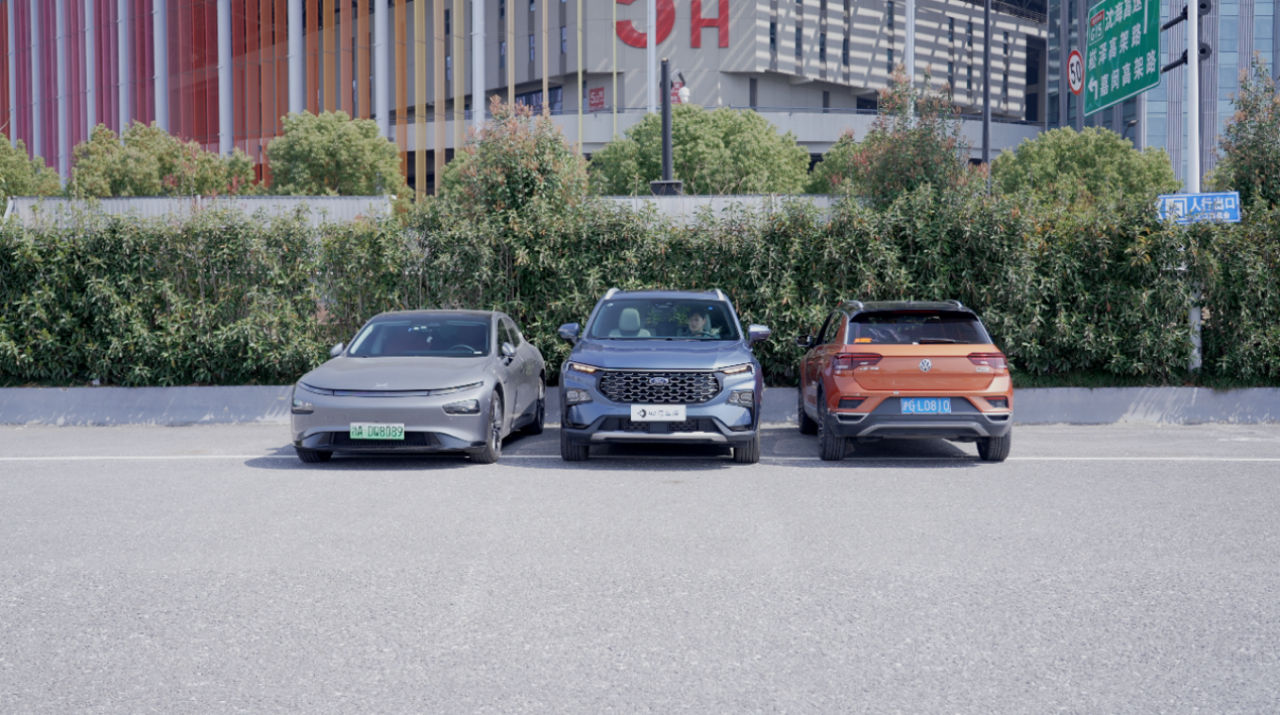
After the Jiangling Ford Lingrui parked, the distance between the two sides was similar, with a distance of 60 cm compared to the left car and 62 cm compared to the right side. This is considered a distance that can barely allow opening the door to get out of the car.
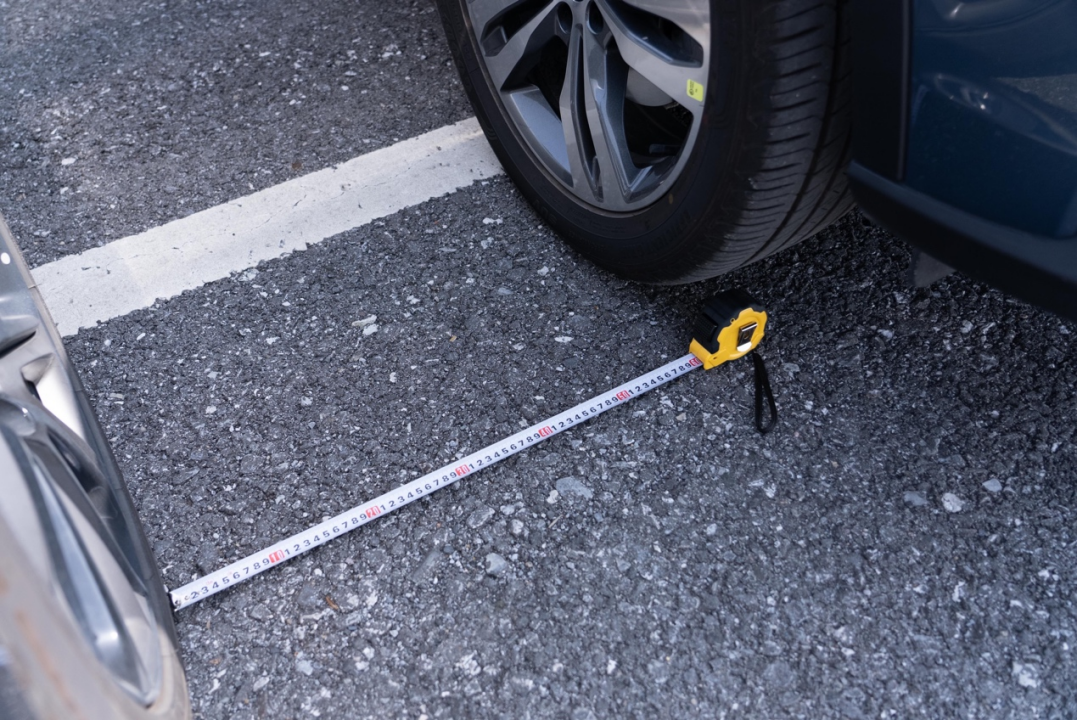
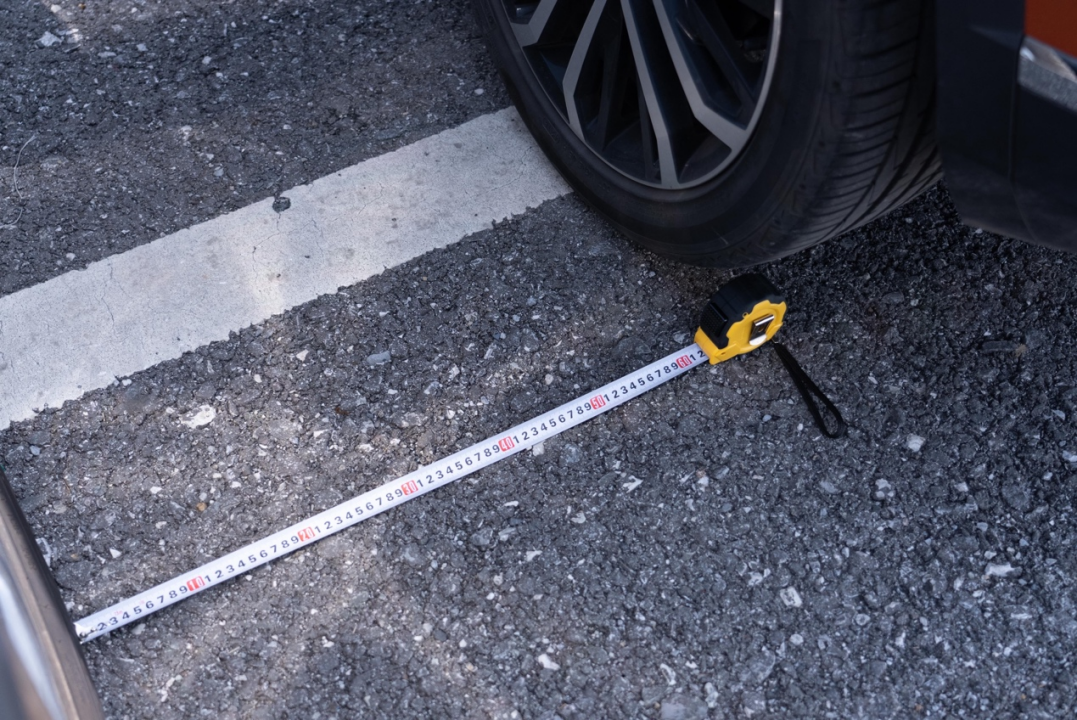
Moreover, after the first parking, the distance from the left car was very narrow, and the space compared to the right car was relatively spacious. Therefore, after the first parking, Lingrui did not rush to complete the parking, but pulled forward to adjust the posture, allowing the body to park between the two cars. This is worthy of praise.
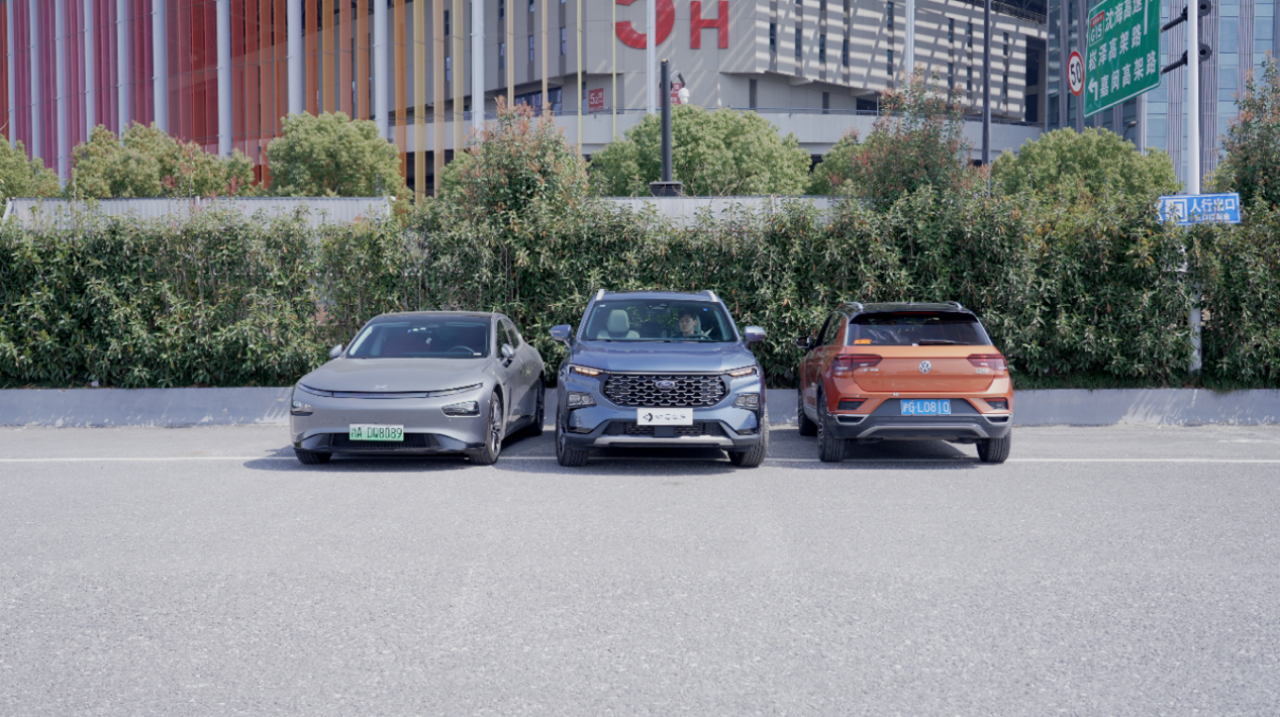
During the parking process, the 360-degree camera was continuously turned on to reflect the moving status of the vehicle in real-time. Even if there are obstacles during the parking process, or the posture has not been adjusted, the vehicle will not force the parking, but will brake and hand over control to the driver in time.
In addition to perpendicular parking, Lingrui also supports parallel parking. Similarly, we set a parking space with a distance of 6 meters between the front and rear cars. After Lingrui turned on the automatic parking function, it parked nearly half of the body into the parking space at once, using the entire width and length of the parking space. Then, it moved forward while adjusting the posture. For Lingrui, the 6-meter parking space can be done in one go.
After parking, the Lingrui accurately measured the distances to the cars in front and behind. After measuring with a tape measure, the Lingrui was found to be 87.5 cm from the front car and 90 cm from the rear car.
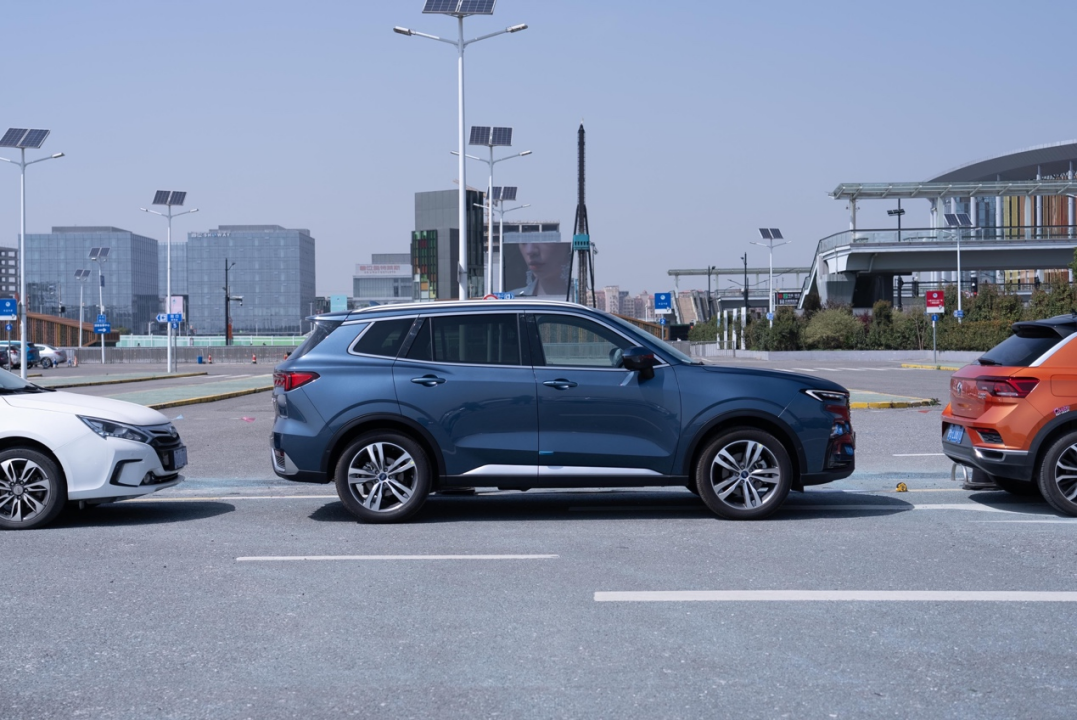
It is worth mentioning that the Lingrui was only 30 cm from the yellow line after parallel parking, which is very close. This also greatly reduces the chance of the car’s body protruding and being scraped by electric bicycles. After all, the width of 1,935 mm is not considered small for the Lingrui.

In addition to the parking lot, I also tried parallel parking on the side of the road. After parking, the distance between the wheels and the curb was only the width of a foot, which would receive a very good score even in a 42Mark test.
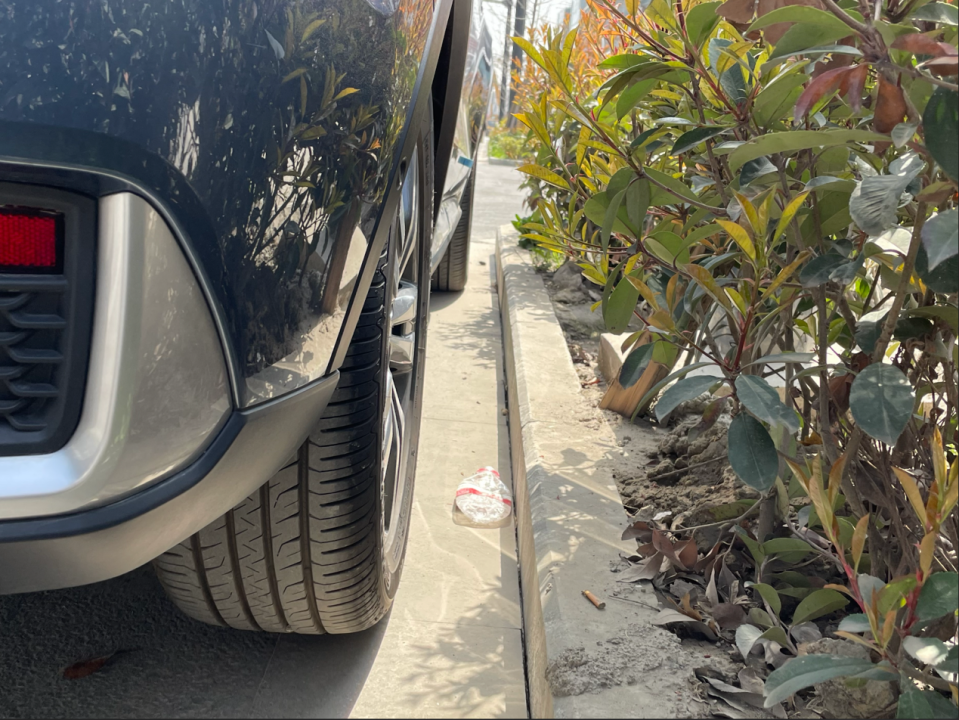
The last highlight is the tracing parking.
Literally, it means reversing according to the trajectory you drove forward. Generally, when we enter one-way streets or dead ends in old communities, this function is particularly useful. The maximum supportable memory length for the Lingrui is 50 meters.
In the fuel car market, the models that provide this function are the top models of the BMW 3 Series, which cost less than 200,000 yuan. It is quite surprising that the Lingrui has this function as well.
After our test, we found that the Lingrui can smoothly pass all the obstacles when the distance between the barrels is as narrow as 3.5 meters. The maximum speed during tracing parking can reach 7 km/h, and it will decrease to 3 km/h in the corners. The overall speed control is good.
In the same price range of fuel cars, it is hard to find a product with a better experience than the Lingrui’s automatic parking system.
During the nighttime test, I found another highlight – the Lingrui can still provide a relatively good display effect in a dark environment with 360-degree panoramic imaging.
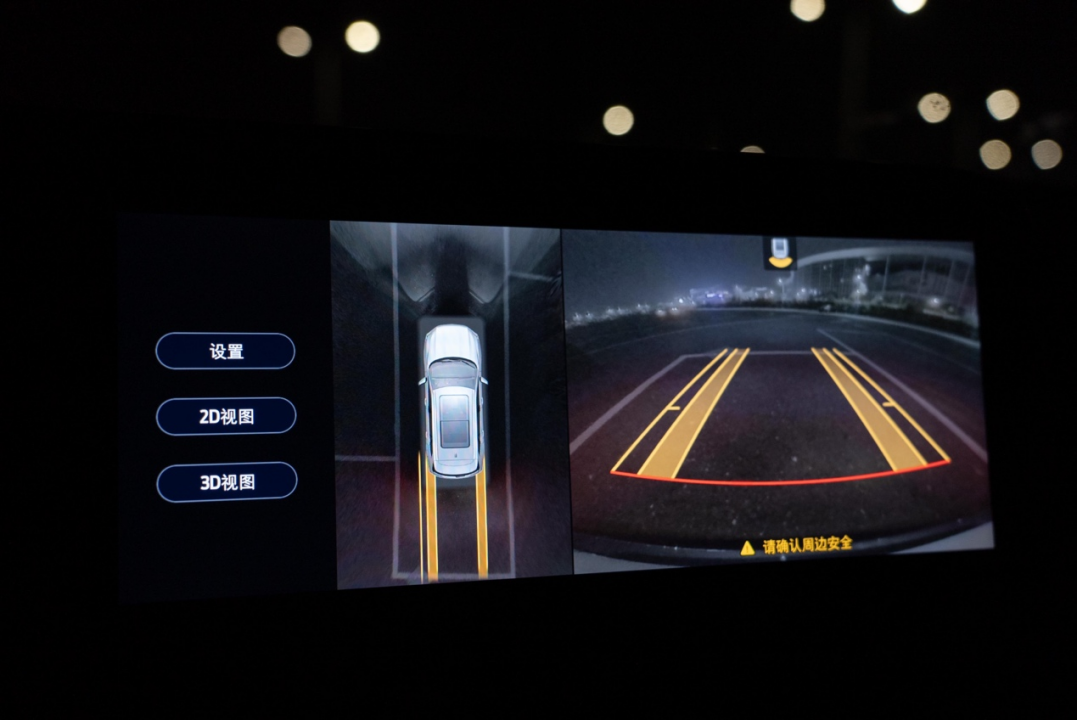
Cabin Experience
The first thing that catches the eye is the 12.3-inch dual screen, with the instrument cluster on the left and the infotainment screen on the right. The display effect is very delicate, and the screens did not appear to be dim even in the strong sunlight of the day.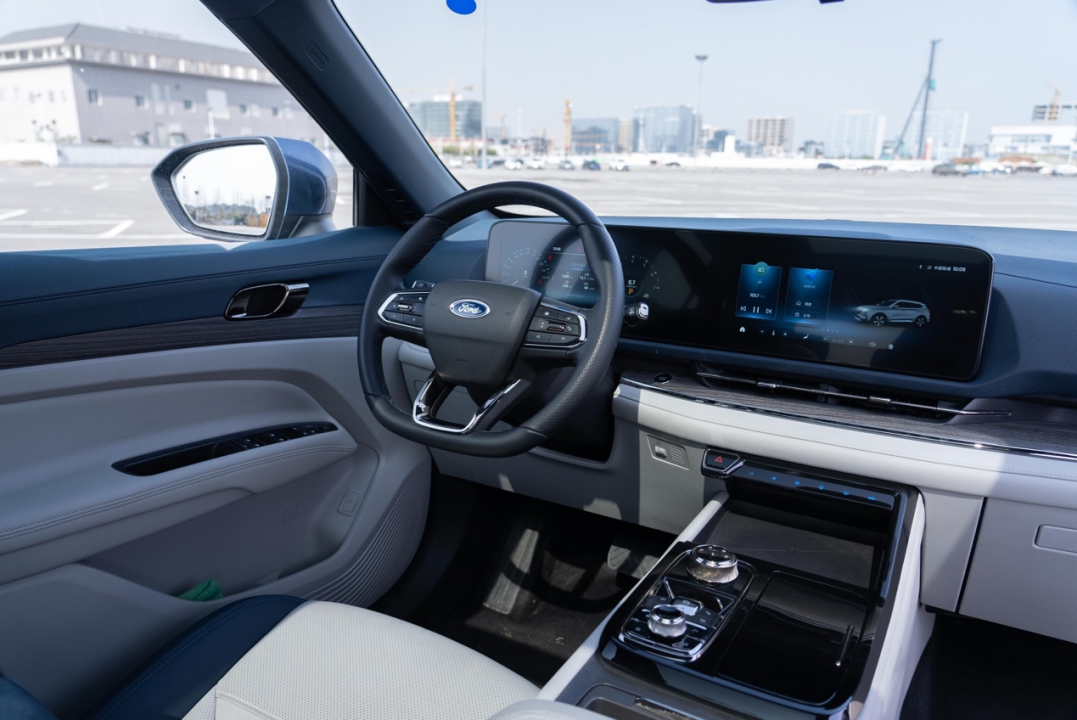
The display content of the instrument panel is relatively simple, with the speedometer and tachometer on the left and right respectively, and the vehicle’s driving information in the center. When the vehicle’s assisted driving is turned on, the middle area will switch to the visual interface of assisted driving. When we switch the car to sport mode, the instrument panel will also have a sports interface. The difference between the two modes is not significant, and they are both mainly concise and intuitive.
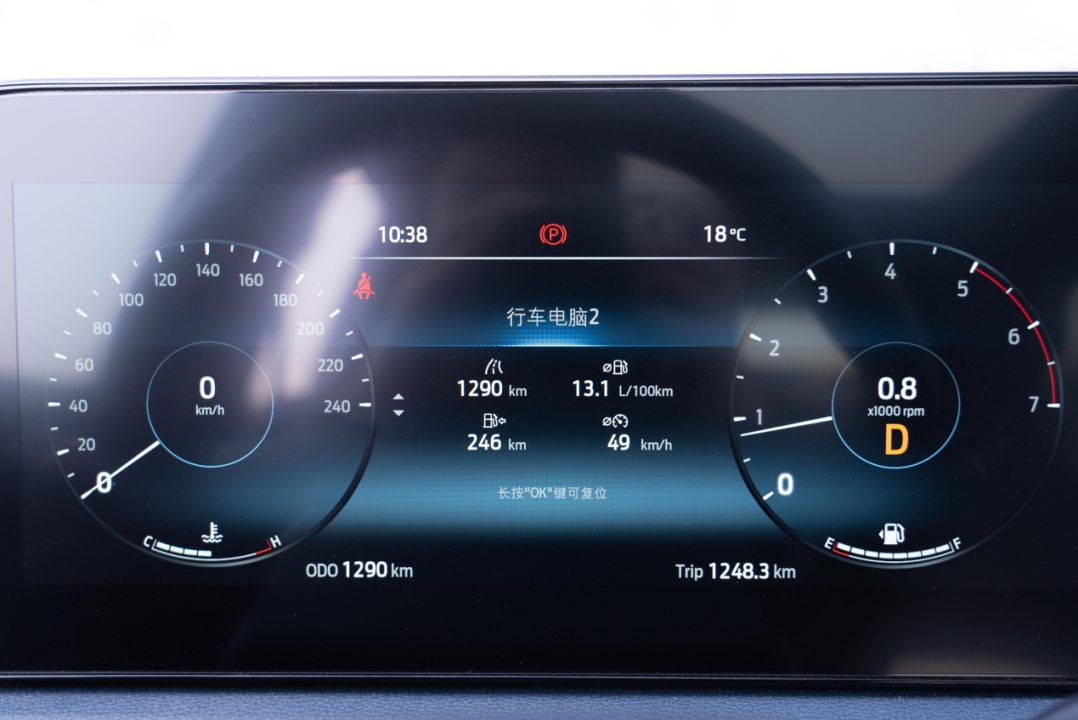
During driving, the vehicle’s information status can be quickly read. In addition to the conventional speed limit, the traffic sign recognition of the JMC Ford Territory can also recognize prohibition signs. When I was driving on city roads at night, it kindly reminded me that right turns were prohibited at the intersection ahead to avoid unnecessary violations.
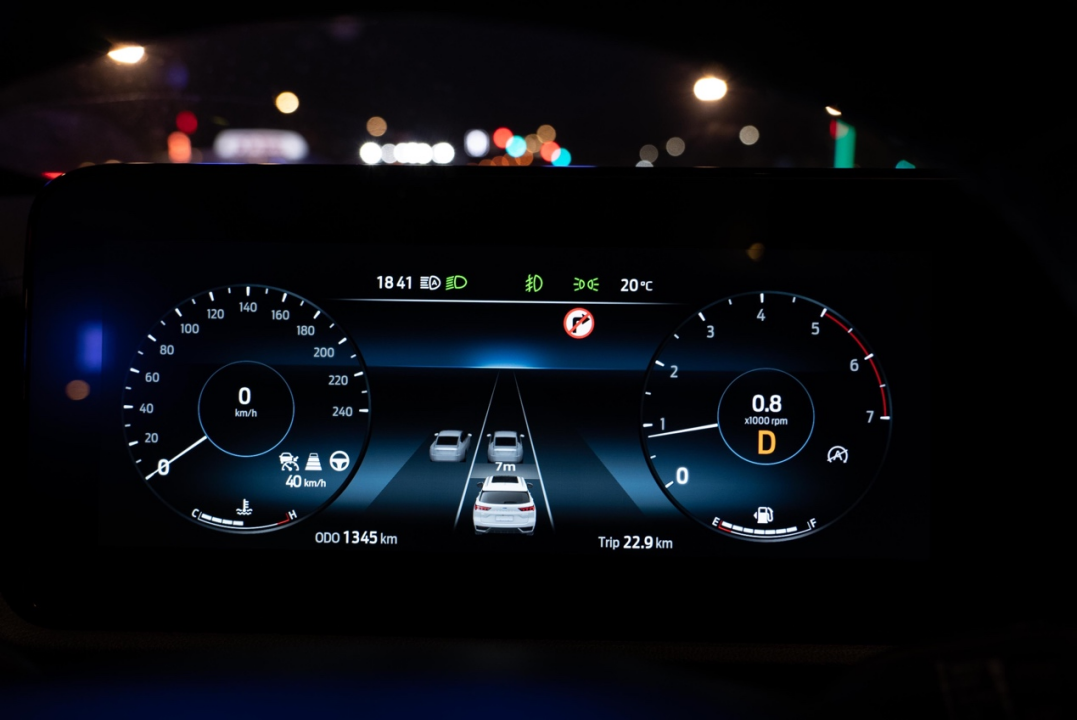
The 12.3-inch central control screen in the middle has a very simple UI design. The music and navigation on the homepage are the functions we frequently use.
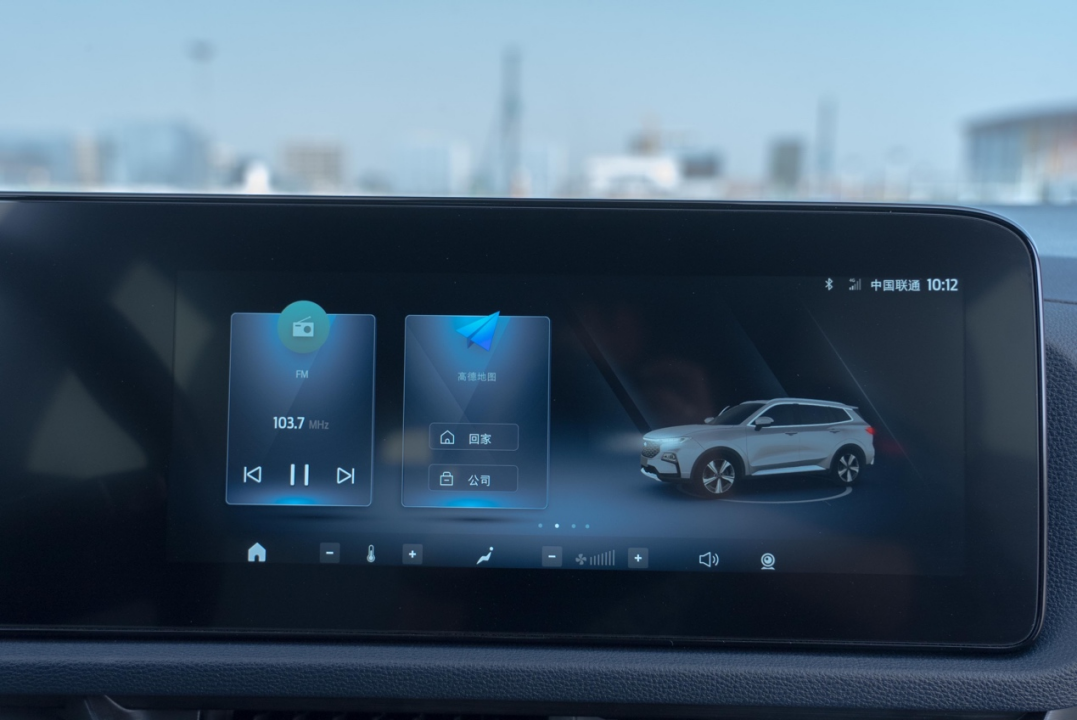
Below is the convenient operation interface of the air conditioning, which can adjust the temperature and wind speed quickly without entering the air conditioning interface. Clicking on the small icon can also directly enter the air conditioning adjustment interface for more detailed adjustment.
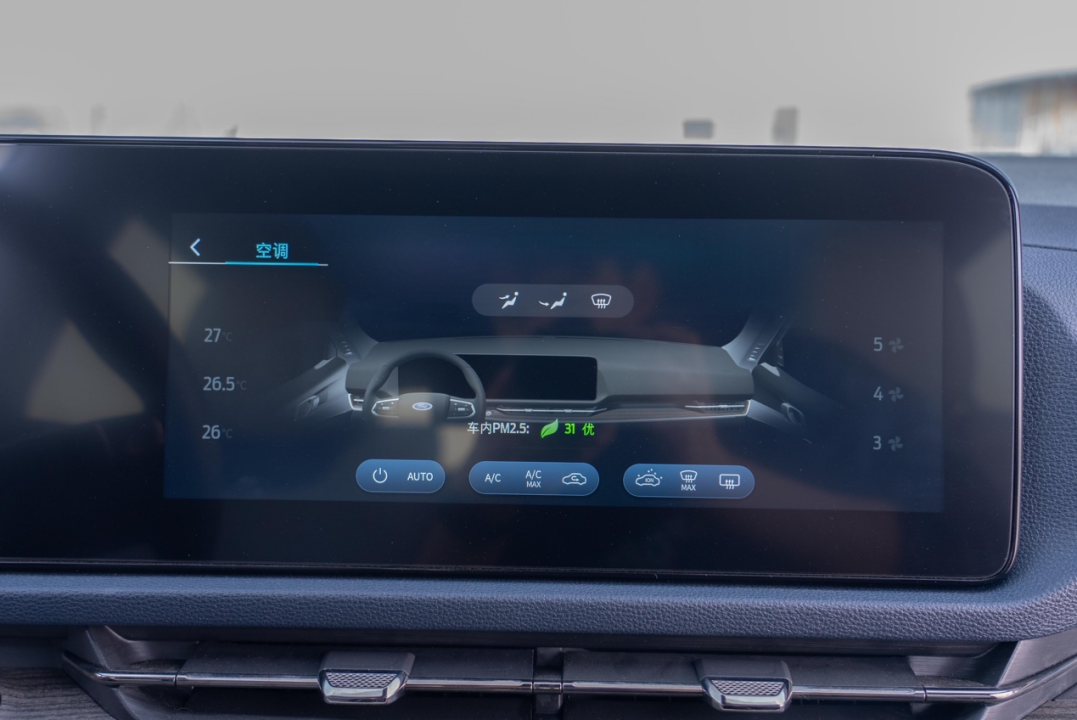
As a traditional automaker, JMC Ford did not integrate all functions aggressively into the screen like new players. Instead, it added a row of air conditioning touch buttons below the screen. It is worth praising that after the touch, there is vibration feedback, and the vibration intensity is moderate, similar to the vibration of a mobile phone, which can allow the driver to clearly get the press feedback.
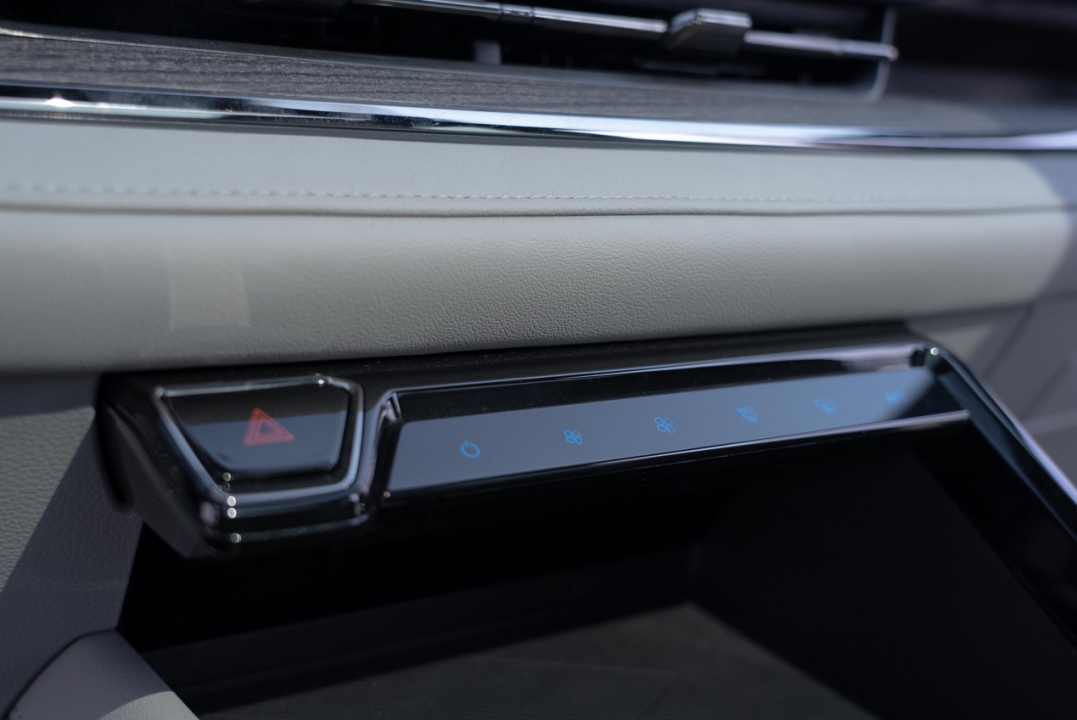
We then continue to slide the screen and directly come to the application list on the right side of the homepage. The vehicle supports many more applications compared with the same level models, and supports Baidu CarLife and HUAWEI HiCar for mobile phone interconnection. In terms of entertainment, it also supports iQiyi.
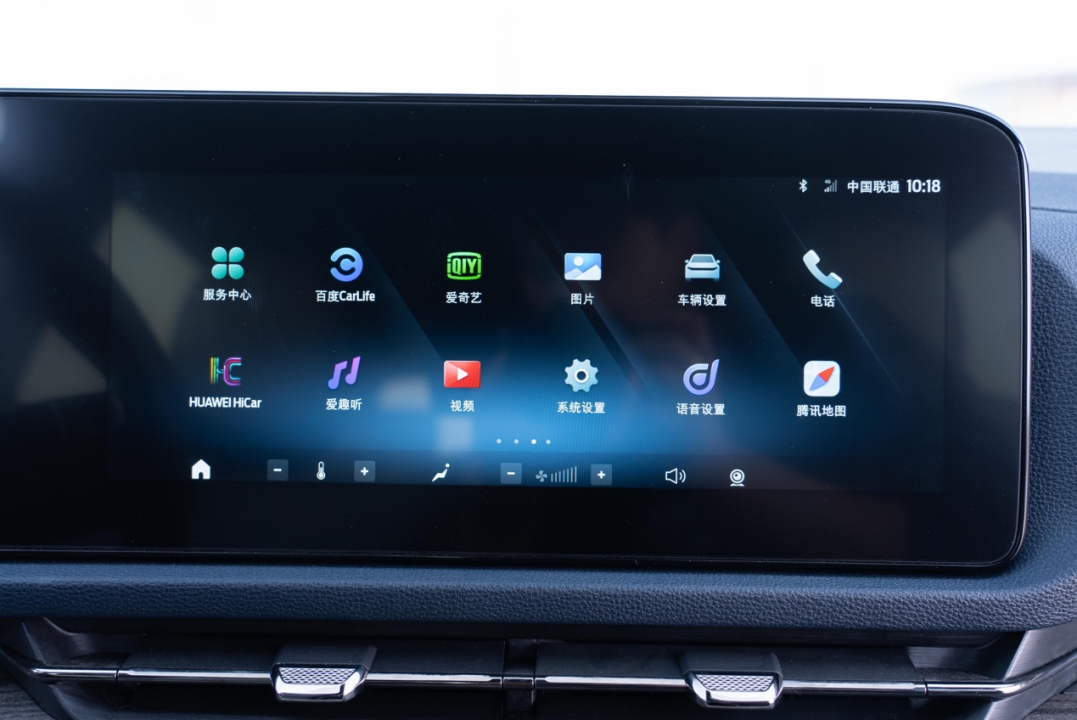 Didn’t you notice just now that the high German map on the homepage changed to Tencent map? Jiangling Ford LINGUIST supports both high German and Tencent maps. One highlight of Tencent map is the support for AR navigation. Thanks to the high-precision map, AR navigation can not only recognize lanes, but also accurately identify internal roads like those in the picture.
Didn’t you notice just now that the high German map on the homepage changed to Tencent map? Jiangling Ford LINGUIST supports both high German and Tencent maps. One highlight of Tencent map is the support for AR navigation. Thanks to the high-precision map, AR navigation can not only recognize lanes, but also accurately identify internal roads like those in the picture.

In terms of voice, this voice assistant has a lot of permissions, and you can use voice to open and close car windows. Moreover, this voice assistant supports zone-based wake-up. If I give a command to open the window in the co-pilot seat, the vehicle will only lower the window on the co-pilot side. In this regard, it is far ahead of other mainstream joint venture brand voice assistants.

The car system of LINGUIST has largely got rid of the old and traditional feeling on joint venture brand fuel vehicles.
What else besides intelligence?
Jiangling Ford LINGUIST’s appearance has been updated with Ford’s latest generation of family-style front face, and the use of split-style headlights shows full of technological sense.

The overall appearance design of LINGUIST conforms to Ford’s consistent design level, and has just the right delineation of details without exaggerated lines, making it a look likeable to all age groups.

In terms of space, a tester with a height of 1.75 meters can still get spacious rear seating space under the comfortable sitting position on the front row.

In terms of power, the Ford LINGUIST is equipped with a four-cylinder 1.5T engine and a 7-speed wet dual-clutch. As a media focusing on electrification and intelligence, our evaluation of the engine may not be professional enough. So here we only provide two data: first, this car can use gasoline of No. 92; second, the fuel consumption is 8.7 L/100 km in the 81.8 km we test drove, including urban and 120 km/h highway conditions.
 Finally, let’s take a look at the price. The pre-sale price range of the Jiangling Ford Territory is between 148,800 and 188,800 yuan. All models are equipped with the same powertrain, and both the top and second-top models come with Level 2 driver assistance as standard.
Finally, let’s take a look at the price. The pre-sale price range of the Jiangling Ford Territory is between 148,800 and 188,800 yuan. All models are equipped with the same powertrain, and both the top and second-top models come with Level 2 driver assistance as standard.
The only thing missing from the second-top model is some features like automatic lane change with turn signal and visual fusion parking. If you are someone who pursues technology, it is a more suitable choice to spend an extra 10,000 yuan to choose the top model at 188,800 yuan.
For users who are not so keen on intelligent technology, but at the same time have certain demands for space, economy and brand, choosing the Lingrui Precision model of the Territory at less than 150,000 yuan is also a very cost-effective choice.
Final Thoughts
With the gradual improvement of automotive intelligence, basic intelligent configurations of vehicles are gradually being downgraded from high-end models to optional equipment, and now slowly becoming standard equipment and moving towards a more mainstream life. This development trend is similar to when vehicles were first equipped with electronic control configurations like ABS and ESP, which continuously improved the driving and riding experience and safety through technological means.
For manufacturers, the additional functions on fuel-based vehicles should not only satisfy the configuration table, but should truly keep up with the times by starting from the user experience and reasonably applying intelligent configurations.
This is because driver assistance in the era of intelligent technology is not just a configuration, but also a tool that can help users avoid accidents, reduce driving fatigue, and make it easy for users to travel. The cabin system in the era of intelligent technology will also redefine the vehicle from a means of transportation to a space for travel.
This article is a translation by ChatGPT of a Chinese report from 42HOW. If you have any questions about it, please email bd@42how.com.
